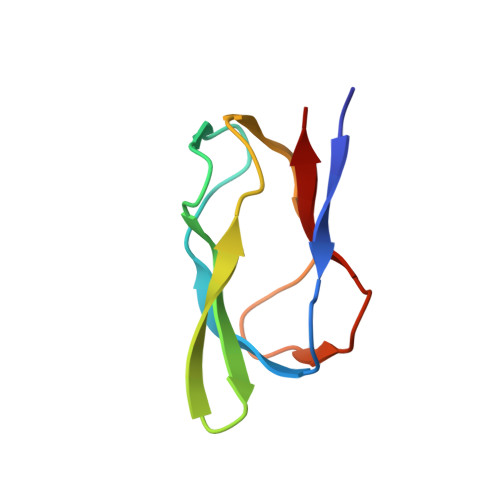Designing better diffracting crystals of biotin carboxyl carrier protein from Pyrococcus horikoshii by a mutation based on the crystal-packing propensity of amino acids.
Yamada, K.D., Kunishima, N., Matsuura, Y., Nakai, K., Naitow, H., Fukasawa, Y., Tomii, K.(2017) Acta Crystallogr D Struct Biol 73: 757-766
- PubMed: 28876239
- DOI: https://doi.org/10.1107/S2059798317010932
- Primary Citation of Related Structures:
5GU8, 5GU9, 5GUA - PubMed Abstract:
An alternative rational approach to improve protein crystals by using single-site mutation of surface residues is proposed based on the results of a statistical analysis using a compiled data set of 918 independent crystal structures, thereby reflecting not only the entropic effect but also other effects upon protein crystallization. This analysis reveals a clear difference in the crystal-packing propensity of amino acids depending on the secondary-structural class. To verify this result, a systematic crystallization experiment was performed with the biotin carboxyl carrier protein from Pyrococcus horikoshii OT3 (PhBCCP). Six single-site mutations were examined: Ala138 on the surface of a β-sheet was mutated to Ile, Tyr, Arg, Gln, Val and Lys. In agreement with prediction, it was observed that the two mutants (A138I and A138Y) harbouring the residues with the highest crystal-packing propensities for β-sheet at position 138 provided better crystallization scores relative to those of other constructs, including the wild type, and that the crystal-packing propensity for β-sheet provided the best correlation with the ratio of obtaining crystals. Two new crystal forms of these mutants were obtained that diffracted to high resolution, generating novel packing interfaces with the mutated residues (Ile/Tyr). The mutations introduced did not affect the overall structures, indicating that a β-sheet can accommodate a successful mutation if it is carefully selected so as to avoid intramolecular steric hindrance. A significant negative correlation between the ratio of obtaining amorphous precipitate and the crystal-packing propensity was also found.
Organizational Affiliation:
Artificial Intelligence Research Center, National Institute of Advanced Industrial Science and Technology (AIST), 2-4-7 Aomi, Koto-ku, Tokyo 135-0064, Japan.














